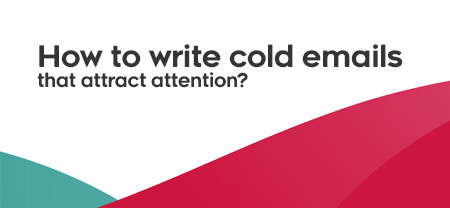The rejection that comes with recipients unsubscribing is undeniable, but we should not take it personally. Editing and perfecting your messaging do not guarantee total acceptance by all and sundry. Hence, it is only normal that some recipients unsubscribe.
See a recipient unsubscribing as a favor – you have one less subscriber who is not interested in what you are saying. It saves you some money and preserves your sending reputation. It is also a better scenario than your email getting marked as spam or junk – that could harm your overall deliverability. So, unsubscribes are not a bad thing. However, it becomes worrisome if they are becoming more too much.
When Does Unsubscribes Become ‘Too Much?’
Anything higher than a 1% unsubscribe rate is too much. However, it is easy to keep a less than 1% unsubscribe rate if you churn out quality and relevant content to people that want them (i.e., recipients who have engaged over the last one month). Do you get more than a 1% unsubscribe rate? It is not the end of the world, as you will find out below.
Why Your Unsubscribe Rate is High?
There is no outright reason for getting too many unsubscribes, but you will find an answer if you investigate using the following questions:
Are the Unsubscribes From a Certain Campaign?
If the answer is yes, then the content you are sending out via this campaign is probably not generally acceptable. What are you missing? Try to divide the recipients into groups according to location, age, purchase preferences, gender, and other pointers. After this, set up your email to perfectly convey the intended information, while being both desktop and mobile-friendly.
Do You Send Them too Often?
If I get emails from a sender too frequently, I might end up unsubscribing. How frequently do you send emails? If daily, consider taking it to twice a week, once a week, or even monthly. See how this affects your unsubscribe rate. Alternatively, you may incorporate a time-based preference center into your emails. Thus, you can get feedback from your recipients on how frequently they want to read you.
When Do You Send?
You do not want your emails to get unhappy and stressed recipients. This is why you should divide your audience into segments according to their location. Thus, you can know when they wake and get your messages to land into their inbox then. Test different times of the day to know what works best.
Do You Have the Recipient’s Consent?
It is counterproductive to send emails to recipients who never agreed to receive your emails.
Are You Keeping Your Promises?
If you are doing something contrary to what you promise to offer recipients at the point of signing up, then you have a potential reason for a high unsubscribe rate. Someone who signed up for a thought-leadership content should not be getting weekly product promotion emails. It is not only disappointing but also counterproductive. Even if you are changing the topics or niches, inform your recipients. And if they want out, offer them the option to unsubscribe.
Do You Send Content that Appears Spammy?
Senders tend to include spammy elements into their email unknowingly. For instance, ALL CAP paragraphs and multiple punctuations??? Urgent phrases like “Buy Now” or “Click this link now” also fall into the same category. You may want to avoid too many links or images too.
How Interesting is Your Content?
An average inbox contains tons of personal, marketing, and transactional emails. Each time you send a message, you are up against several other senders in competing for the attention of your recipient. So, stand out by putting out concise, relevant, and compelling content. How about a blend of thought-leadership and promotional content? They are known to engage recipients easily.
What are The Most Common Unsubscribe Situations?
The situations considered below will help you find ways to improve.
Scenario 1 – Promotional Emails
Perhaps you promised your recipients weekly thought-leadership emails and quotes at the point of signing up, but you later decided to send them a new promotion you just started, and this led to a 4% unsubscribe rate. What do you think the problem is?
What happened here is simply a case of promising A and delivering B. It is like getting played or taken for granted. Either way, most recipients will unsubscribe. What you should have done is update the form on your website so that it reads promotional emails. Likewise, get in touch with your recipients of the change and allow them to unsubscribe if they are not comfortable with it. This way, your promotional emails will only go to recipients that truly wanted it.
Scenario 2 – Newsletter Cadence
You are sending out a monthly newsletter that fetches you a high engagement and helps to sell your products. However, you increased the frequency to bi-monthly, and this led to a rise in the number of unsubscribes. What do you think the problem is?
Basically, you did not set the right expectations. What recipients expected were monthly announcements, not a twice-a-month regular newsletter. What you should have done is to notify them (the recipients) of the change and offer them the option of unsubscribing or choose their preferred cadence for subsequent emails.
Conclusion
From our discussion so far, we have been able to establish that email unsubscribes is not the end of the world. It is only a problem if it rises to more than 1%, and even at that, there is a fix.
Come up with an action plan and find out what the issue really is by checking your email stats. Are the unsubscribes coming from a specific campaign? Are you delivering something different from what you promised your subscribers? Identify these shifts in expectations and tackle them directly. Your audience will be happier and satisfied if you are honest and open with them. Here is what you can do to avoid alarming unsubscribe rates;
- Send concise messages
- Your sign-up form should contain clear expectations
- Be clear about the actions you expect your recipients to take
- Divide your audience into groups and streamline your content to each group
Lastly, always remind yourself that there is nothing you cannot fix when it comes to email marketing, including high unsubscribe rates.



![How to Warm up Domain or IP [2025]](https://ik.imagekit.io/debounce/wp-content/uploads/2022/06/warm-up-domain-ip-1-300x139.png)

